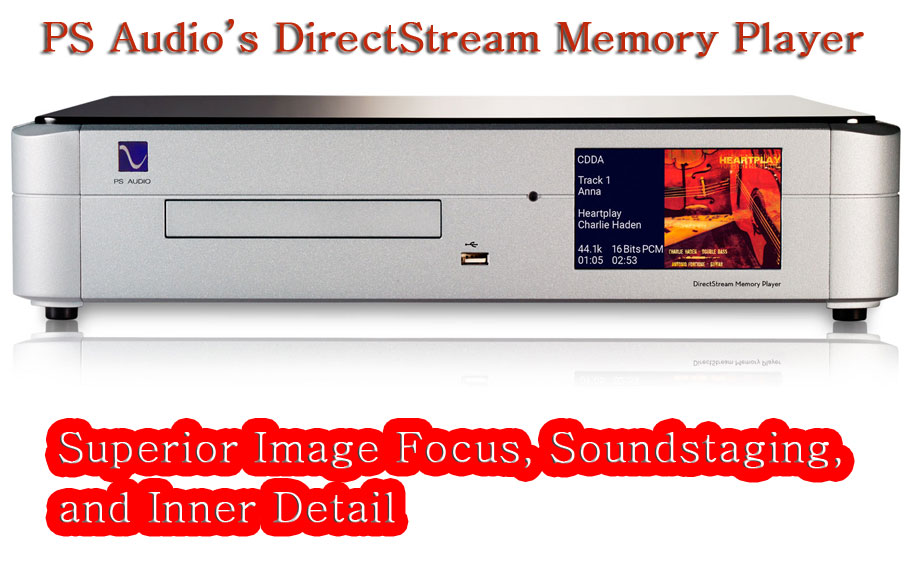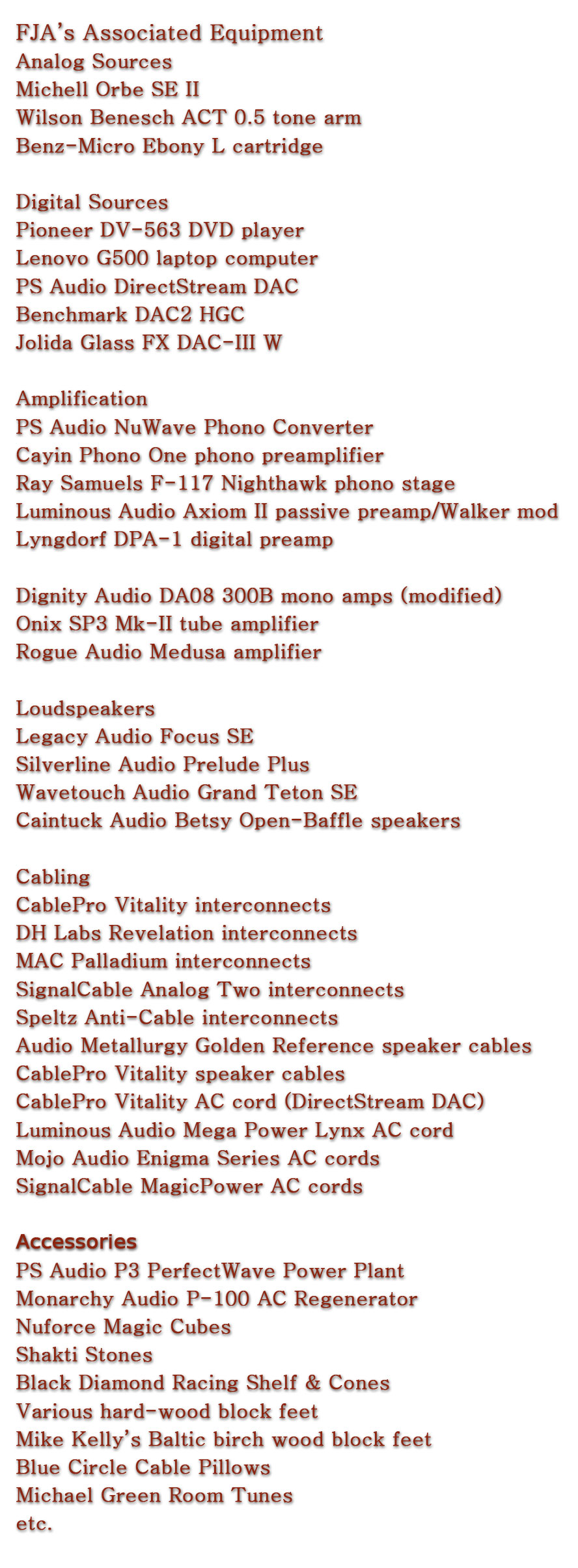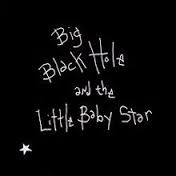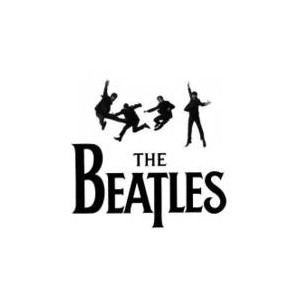PS Audio DirectStream Memory Player


PS Audio has long been known for its excellent D/A converters and disc transports. Their DirectStream DAC has received rave reviews in just about every consumer audio publication and so they thought it was time to move beyond their PerfectWave (memory) transport/player which was introduced in 2009 and was highly lauded by the Consumer Audio magazines and revered by countless audiophiles as their transport of choice.
PS Audio claims they have taken another giant leap forward with the introduction of the DirectStream Memory Player (DMP), which for sure is a high-resolution product. PS Audio even uses a more refined version of their proprietary Digital Lens in the DMP and I can confirm that the focus of instrumental images and other sounds is superb and in truth, it exceeds that of any other digital source in my experience.
The DMP uses an Oppo Blu-ray transport, but the other circuitry contained in the chassis is much different than anything Oppo provides. PS Audio’s main man, Paul McGowan, has stated that he purposefully left video-related circuitry out of the DMP because he believes that video circuitry is noisy and he strove to avoid any degradation of the audio signal in this remarkable product.

One thing PS Audio is particularly proud of is that the DMP is the first disc transport that is capable of outputting the digital DSD layer that Sony developed for its SACD releases. The SACD DSD digital is available on DMP’s I2S outputs over HDMI-type connectors—the caveat being that the receiving DAC must have an I2S input on HDMI so that the DMP and the connected DAC can do their proprietary handshake before playing will begin.
I believe PS Audio sells 3 different model DAC’s, the DirectStream, DirectStream Junior, and now the new entry level Stellar Gain Cell DAC, which is a nice package featuring Gain Cell volume control, the proprietary Digital Lens technology, analog inputs, the I2S input (required for SACD) and more for only $1,699.
The DMP will play the following file types: Blu-ray audio, DVD-Audio, AVCHD, SACD, HRx, CD, CD-R/RW, DVD±R/RW, DVD±R DL, BD-R/RE, as well as stored data through its front-panel USB digital input (think thumb drive). In actual use the DMP did have trouble navigating my 2L Blu-ray music discs. It would play them starting at Track 1 and it would progress through the tracks one at a time, but I could not get the player to index the individual tracks by track number or by using the “Next” function. PS Audio admits they’ve had trouble with this and are not sure that it can be rectified.
 Similarly, plug-in thumb drives will play multiple formats including DSD and 24/192-bit files (and play them very well)—heck, it will even play MP3’s you may have on a thumb drive or CD-ROM. But when PS Audio states that navigation may be difficult they mean it. If you only have a few folders on the thumb drive this should not be a problem, but if there are many albums and folders then good luck getting to a middle or end folder anytime soon!
Similarly, plug-in thumb drives will play multiple formats including DSD and 24/192-bit files (and play them very well)—heck, it will even play MP3’s you may have on a thumb drive or CD-ROM. But when PS Audio states that navigation may be difficult they mean it. If you only have a few folders on the thumb drive this should not be a problem, but if there are many albums and folders then good luck getting to a middle or end folder anytime soon!
That said, I do like that the DMP has no difficulty in recognizing the different file types and will automatically switch to the appropriate file-type and resolution for playback.
Another thing to be aware of is that the video display will only be able to access album cover art and meta-data if the DMP is connected to a computer with Internet access. This can be done by using an Ethernet cable from the router or by using a WiFi device with a hard-wired Ethernet output to the DMP. Since I did not have the appropriate WiFi/Ethernet device or a long enough cable to connect from my router to the DMP I did not provide the cover art or meta-data—but the DMP’s touch screen worked well for displaying some disc information and allows the user to change certain settings based on their preferences and system capabilities.
Also to note is that in the settings there is a “Pure Audio” mode, which I suppose bypasses some part of the circuitry. The setting for Pure Audio can be either enabled or disabled in the Settings Menu. My quick take on the difference in presentation was that the Pure Mode actually softened the sound a little too much for my liking with my tube amplifiers. Therefore I opted to leave that option disabled. But every system is different and my recommendation would be to try the Pure Mode vs having it disabled and see which presentation you prefer in your own audio system.
 The Setup
The Setup
My set-up of the DMP was simple (as it should be). I plugged it in to my Monarchy Audio P100 power regenerator, along with the DirectStream DAC (a good AC power regenerator is recommended for ultimate sound quality and second best is a high-quality AC filter, which PS Audio also sells). I used the recommended I2S (on HDMI) cable to connect the DMP to the DAC and the DirectStream DAC immediately recognized the DMP and apparently they shook hands. Note that as of this writing you must have the latest Torreys firmware installed on the DAC for the two “friends” to shake on it and play a SACD’s DSD layer.
My two small-room systems were employed for the evaluation. This included my modified Dignity Audio 300B mono amps feeding the WaveTouch Audio Grand Teton SE speakers, and my Melody Onix SP2 Mk-II amp driving the Silverline Audio Prelude Plus speakers.
The Listening Experience
My listening evaluation of the DMP proved to be as informative as it was musically engaging. And just to be clear, it is using firmware version 1.94, which is the latest version available at this juncture.
I recall that in my first session I was immediately taken by how distinct and articulate the bass had become—it was no longer the blob of boom that characterizes many audio systems. Bass notes appeared as distinct notes with pitch definition and when reproducing drums I could hear more of the skins on the drums and the echo inside the drum. And of course runs on the bass guitar and bass viola were more nimble and distinct, like I was hearing it live. Very nice!
To my delight, I found that the DMP played just about every known stereo audio format including MP3, Redbook CD, SACD, and even FLAC files recorded at high resolution that would not play on other DVD/CD players I have in the house (or on any of my local friend’s players). The DMP also played DSD files and PCM files up to 24/192 from my thumb drives and sounded fantastic doing it.
As with other outstanding gear, the DMP will not make poorly engineered recordings sound good, but it will make many well-engineered recordings sound simply wondrous.
I got a kick out of playing tracks from the Austin Powers movie soundtrack The Spy Who Shagged Me (Maverick 9 47348-2). In general this CD is very dynamic, full range and has a lot going on in the various mixes. The engaging love ballad “Just the Two of Us,” seemed all the more heartfelt sung by Dr. Evil to his clone “Mini Me” and I found it very touching. The vocals were precious as was the score—it was almost like Dr. Evil wasn’t really all that evil (of course we know better!).

And on Mel B’s version of “Word Up” the bass was stompingly good and the backing vocals were very distinct and clear in the immense soundstage that the DMP provides. In fact, in most of the music I played, lyric comprehension—even with lyrics buried deep in the layers of the presentation, were rendered more clearly and discernable than with any other source I’ve used to date. On Sean Hayes’ tender song “F@%ked Me Right Up” from his Big Black Holeand the Little Baby Star CD, I could hear and feel the emotional conviction in Sean’s voice as the big bass drum pounded his points home. The backing guitar work sounded very authentic and sincere. Again, the DMP threw a huge soundstage with lots of space and air.
 One album that really impressed me—enough to say it seemed as if I was hearing it for the first time was the Beatles’ Love CD (Apple 9463 79808-2). For some reason all the songs just sounded a bit more “right” when played through the DMP. And I could really appreciate the clarity of the individual instruments and vocals in the very complex mixes contained on this masterfully engineered work of art. Instead of the usual slight smearing of the instruments, they were all just a bit more clear and differentiated.
One album that really impressed me—enough to say it seemed as if I was hearing it for the first time was the Beatles’ Love CD (Apple 9463 79808-2). For some reason all the songs just sounded a bit more “right” when played through the DMP. And I could really appreciate the clarity of the individual instruments and vocals in the very complex mixes contained on this masterfully engineered work of art. Instead of the usual slight smearing of the instruments, they were all just a bit more clear and differentiated.
I believe what helped this illusion was the total absence of extraneous noise that normally pervades the soundstage with other digital source components. And further, I think that it is the superior image focus of this player combined with its extremely low interstitial noise that allows it to capture more subtle nuances and fine details than virtually any other player or digital source in my experience.
Whether it was a relatively simple track like “Yesterday” or “Blackbird,” or a truly complex and raucous track like “Sgt. Pepper’s Lonely Hearts Club Band” that contains a skillful interweaving of various instruments and sounds, the DMP presented the music perfectly, time and time again.
Caveats
Aside from the DMP’s limited indexing/navigation capabilities when playing Blu-ray discs or music files from flash drives (that I mentioned at the beginning of this review), the other thing that I found to be most unusual—and perhaps not relevant for the average audiophile, is the way the DMP deals with multi-channel audio playback. I’m still a bit foggy on what multi-channel formats can actually be handled by the DMP, but in an e-mail I received from Paul McGowan he revealed that it includes, in his words: “Yes, it has all the likely suspects built in. No extra processors are needed, just more DACs.” I took that to mean it includes processing for recent Dolby and DTS multi-channel codecs/formats.
I do know that there are three I2S outputs (and three S/PDIF outputs), and that you can use either set of the three outputs to play back up to six individual channels including L&R Front, Center & Subwoofer, and L&R Rear channels—in other words, a 5.1 surround configuration. This complex arrangement would also necessitate 3 stereo DACs and 6 channels of amplification in addition to the DMP. So this is not a setup for the faint of heart or slight of budget. And of course when dealing with routing the attendant gaggle of cables from the 3 stereo amps and DACs and their power cords, well, it’s not an adventure to be underestimated or taken lightly.
Another consideration is volume control since the DMP lacks that feature. Of course you can use DAC’s with built-in volume controls but if you’re using the DMP’s S/PDIF RCA outputs you will have to adjust the volume of each stereo DAC individually. The only way to get master volume control that makes sense is to use PS Audio DACs that include volume controls and I2S inputs, and that way (I was told) the DAC that receives the L&R Front channels will recognize the other two I2S connected PS Audio DACs and will act as the Master Volume controller for the resulting 5.1 channel system.
Conclusion
In spite of the DMP’s unusually complex multi-channel configuration and navigational issues with Blu-ray music discs and computer flash drives, I must tell you that in terms of pure audio performance it may be in a class by itself—and that fact alone makes it worth its $6k price of admission and a very good value in the world of High-End Audio.
In my view the DMP’s extreme clarity, musicality, and absence of the usual noise that clouds instrumental passages sets the DirectStream Memory Player apart from any other digital source in my experience. And the resulting huge, multi-layered, unsullied soundstage it routinely provides makes it the Michael Angelo of sound reproduction in my personal gallery of Audio All-Stars!
My thanks and gratitude go out to Paul McGowan and Team PS Audio for all their great work in setting the bar just a bit higher in achieving outstanding musical performance in a home setting.


frank alles
Manufacturer
PS Audio
4826 Sterling Drive
Boulder, CO 80301
Phone: 1 720.406.8946
Web: www.psaudio.com
PS Audio DirectStream Memory Player
Price: $5,999
Features:
· Universal Disc Player
· SACD, CD, CD-R/RW, DVD±R/RW, DVD±R DL, AVCHD, HRx
- Plays FLAC, APE, WMA, MP3, M4A, AAC, DTS, AC3, WAV, DSF, MKA, PCM, OGG, from discs or USB input
· Memory Player Transport
· SACD DSD layer available through I2S output to PS DACs
· Advanced Digital Lens Technology
· 6-channel digital coax outputs
· 6-channel digital I2S outputs through HDMI style connector
· XLR AES/EBU stereo digital output
· USB data input for stored digital media
· Cover art
· Full color LCD touch screen
For Full Features List: http://www.psaudio.com/products/directstream-memory-player/#tab-features
Stereo Times Masthead
Publisher/Founder
Clement Perry
Editor
Dave Thomas
Senior Editors
Frank Alles, Mike Girardi, Russell Lichter, Terry London, Moreno Mitchell, Paul Szabady, Bill Wells, Mike Wright, and Stephen Yan,
Current Contributors
David Abramson, Tim Barrall, Dave Allison, Ron Cook, Lewis Dardick, John Hoffman, Dan Secula, Don Shaulis, Greg Simmons, Eric Teh, Greg Voth, Richard Willie, Ed Van Winkle, Rob Dockery, Richard Doron, and Daveed Turek
Site Management Clement Perry
Ad Designer: Martin Perry





Be the first to comment on: PS Audio DirectStream Memory Player